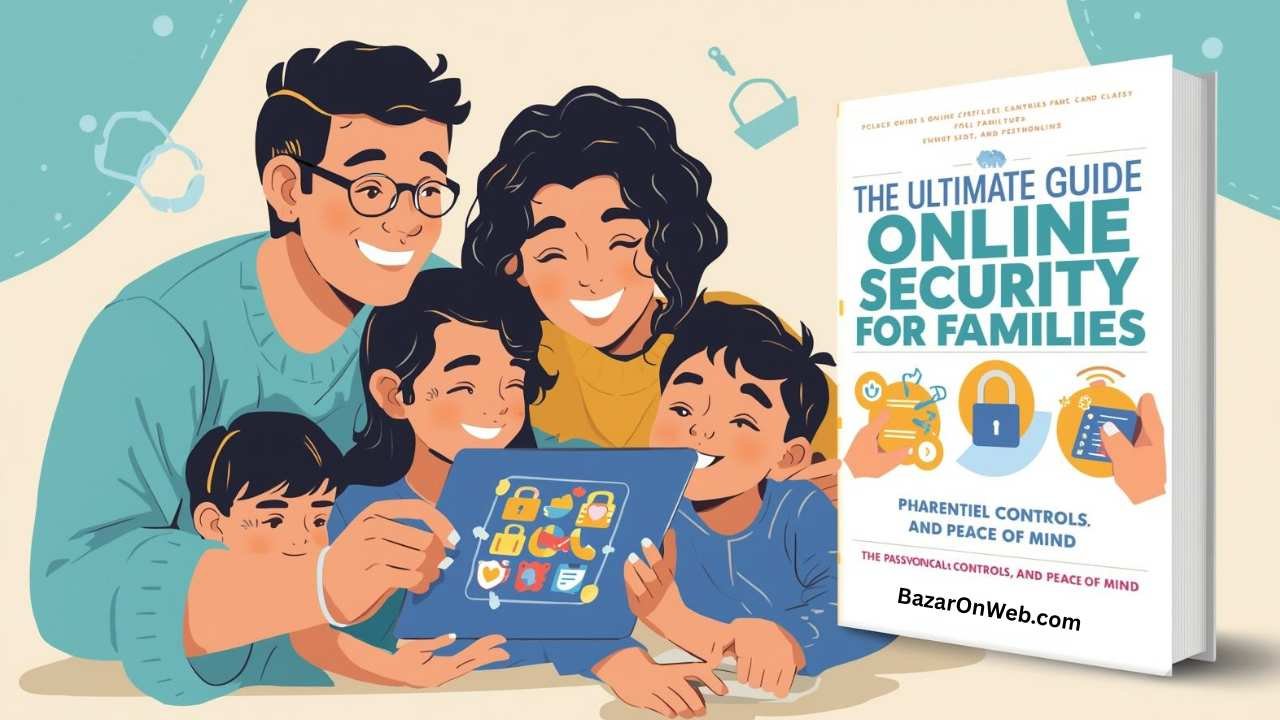Category
Popular Articles
- AI (12)
- Android (38)
- App Suggest (4)
- Apple (15)
- Apple TV (2)
- Bluetooth (3)
- Cars (2)
- ChatGpt (1)
- Chrome (2)
- Did you know? (1)
- E-Commerce News (1)
- Ecommerce Websites business (7)
- Electronics Shopping (5)
- Fashion Tips (3)
- Gaming (4)
- Google Gemini (3)
- Hair Care Tips (2)
- How to (13)
- iCloud (1)
- Infotainment System (1)
- Iphone (101)
- Job Posting (1)
- Lifestyle (3)
- Mac (20)
- Mobile Games (1)
- Netflix (1)
- Online Shopping Websites (2)
- Personal Finance Management (3)
- Product Reviews (3)
- Roku TV (4)
- Samsung (9)
- Shopping Tips (10)
- Spotify (1)
- Tech (92)
- Windows 11 (18)
- Zero Waste (3)
Discounted Products
-
 Leo Creation 144 TC Cotton Double Jaipuri Prints Flat Bedsheet(Pack of 1, Blue, Gree, Red, Grey, Light Grey)
Leo Creation 144 TC Cotton Double Jaipuri Prints Flat Bedsheet(Pack of 1, Blue, Gree, Red, Grey, Light Grey)
₹2,999.00Original price was: ₹2,999.00.₹329.00Current price is: ₹329.00. -
 Home Garage 210 TC Cotton King Floral Fitted (Elastic) Bedsheet(Pack of 1, Grey)
Home Garage 210 TC Cotton King Floral Fitted (Elastic) Bedsheet(Pack of 1, Grey)
₹999.00Original price was: ₹999.00.₹299.00Current price is: ₹299.00. -
 Goodrik 140 TC Cotton Double 3D Printed Flat Bedsheet(Pack of 1, Brown)
Goodrik 140 TC Cotton Double 3D Printed Flat Bedsheet(Pack of 1, Brown)
₹499.00Original price was: ₹499.00.₹229.00Current price is: ₹229.00. -
 GLOBALSHOP 350 TC Microfiber Double Floral Flat Bedsheet(Pack of 1, Multicolor)
GLOBALSHOP 350 TC Microfiber Double Floral Flat Bedsheet(Pack of 1, Multicolor)
₹1,250.00Original price was: ₹1,250.00.₹263.00Current price is: ₹263.00. -
 RisingStar 250 TC Microfiber King Printed Fitted (Elastic) Bedsheet(Pack of 1, FITTED-ROUND-CIRCLES-PREMIUM)
RisingStar 250 TC Microfiber King Printed Fitted (Elastic) Bedsheet(Pack of 1, FITTED-ROUND-CIRCLES-PREMIUM)
₹2,299.00Original price was: ₹2,299.00.₹299.00Current price is: ₹299.00. -
 Home Garage 210 TC Cotton King Floral Fitted (Elastic) Bedsheet(Pack of 1, Fitted Black Green)
Home Garage 210 TC Cotton King Floral Fitted (Elastic) Bedsheet(Pack of 1, Fitted Black Green)
₹1,299.00Original price was: ₹1,299.00.₹299.00Current price is: ₹299.00. -
 Home Garage 180 TC Cotton King 3D Printed Flat Bedsheet(Pack of 1, White)
Home Garage 180 TC Cotton King 3D Printed Flat Bedsheet(Pack of 1, White)
₹999.00Original price was: ₹999.00.₹229.00Current price is: ₹229.00. -
 Home Sizzler 153 cm (5 ft) Polyester Room Darkening Window Curtain (Pack Of 2)(Floral, Maroon)
Home Sizzler 153 cm (5 ft) Polyester Room Darkening Window Curtain (Pack Of 2)(Floral, Maroon)
₹799.00Original price was: ₹799.00.₹299.00Current price is: ₹299.00. -
 Panipat Textile Hub 152.4 cm (5 ft) Polyester Window Curtain (Pack Of 2)(Solid, Aqua)
Panipat Textile Hub 152.4 cm (5 ft) Polyester Window Curtain (Pack Of 2)(Solid, Aqua)
₹1,899.00Original price was: ₹1,899.00.₹299.00Current price is: ₹299.00. -
 Home Sizzler 214 cm (7 ft) Polyester Semi Transparent Door Curtain (Pack Of 2)(Floral, Maroon)
Home Sizzler 214 cm (7 ft) Polyester Semi Transparent Door Curtain (Pack Of 2)(Floral, Maroon)
₹1,199.00Original price was: ₹1,199.00.₹399.00Current price is: ₹399.00. -
 Home Sizzler 153 cm (5 ft) Polyester Room Darkening Window Curtain (Pack Of 2)(Floral, Brown)
Home Sizzler 153 cm (5 ft) Polyester Room Darkening Window Curtain (Pack Of 2)(Floral, Brown)
₹799.00Original price was: ₹799.00.₹299.00Current price is: ₹299.00. -
 Stella Creations 214 cm (7 ft) Polyester Room Darkening Door Curtain (Pack Of 2)(Abstract, Brown)
Stella Creations 214 cm (7 ft) Polyester Room Darkening Door Curtain (Pack Of 2)(Abstract, Brown)
₹1,299.00Original price was: ₹1,299.00.₹449.00Current price is: ₹449.00. -
 Homefab India 152.5 cm (5 ft) Polyester Room Darkening Window Curtain (Pack Of 2)(Floral, Light Blue)
Homefab India 152.5 cm (5 ft) Polyester Room Darkening Window Curtain (Pack Of 2)(Floral, Light Blue)
₹1,199.00Original price was: ₹1,199.00.₹319.00Current price is: ₹319.00. -
 Urban Home 214 cm (7 ft) PVC Transparent Door Curtain Single Curtain(Solid, Off White)
Urban Home 214 cm (7 ft) PVC Transparent Door Curtain Single Curtain(Solid, Off White)
₹699.00Original price was: ₹699.00.₹203.00Current price is: ₹203.00. -
 Panipat Textile Hub 213 cm (7 ft) Polyester Door Curtain (Pack Of 2)(Solid, Brown)
Panipat Textile Hub 213 cm (7 ft) Polyester Door Curtain (Pack Of 2)(Solid, Brown)
₹1,199.00Original price was: ₹1,199.00.₹349.00Current price is: ₹349.00.
Affiliate Links
Promotion

Our homes are more connected than ever before. From smart TVs and gaming consoles to school tablets and smartphones, technology has become the invisible heartbeat of modern family life. But with every new device and app comes a new layer of vulnerability — especially when children are involved.
Online threats today go far beyond viruses and pop-ups. Cybercriminals exploit weak passwords, phishing scams target parents, and predators lurk on social platforms disguised as peers. As parents, the goal isn’t to ban technology — it’s to make it safe, manageable, and empowering for every family member.
This guide breaks down the essentials of family online security, focusing on three pillars: strong passwords, effective parental controls, and peace of mind through smart habits.
1. Understanding the Modern Family’s Digital Landscape
Before we jump into the solutions, it’s important to understand how and where security risks emerge in a typical household.
Here’s a quick snapshot:
- Each family member owns at least 2–3 internet-connected devices.
- Children often use shared Wi-Fi networks for online classes, games, and social media.
- Parents use mobile apps for banking, healthcare, and work-from-home tasks.
- Smart home devices — cameras, speakers, thermostats — collect constant data.
The problem? Every single connected device is a potential entry point for hackers.
What’s even more concerning is that children — the most active digital users — often don’t recognize online risks. They may share personal information, click suspicious links, or use unsafe apps without realizing the consequences.
That’s why online security for families isn’t a one-time task. It’s an ongoing process of education, prevention, and adaptation.
2. Passwords: Your Family’s First Line of Defense
Let’s start with the basics — passwords.
Weak or reused passwords are like leaving the front door unlocked. In fact, according to a 2024 study, over 70% of cyberattacks involved compromised credentials.
Here’s how to ensure your family’s passwords are rock solid.
🧩 Use Strong, Unique Passwords for Every Account
A strong password should include:
- At least 12 characters
- A mix of uppercase and lowercase letters
- Numbers and special symbols
- No real words, names, or birthdays
Example: Instead of Emily2009, try E!m9ly_#20z09L — hard to guess, easy to remember with a pattern.
🔐 Consider a Family Password Manager
Remembering dozens of complex passwords is impossible. That’s where password managers like 1Password, Bitwarden, or Dashlane Family come in.
These tools:
- Generate and store unique passwords securely.
- Autofill logins across devices.
- Allow parents to manage shared accounts (like Netflix or school portals).
With family plans, you can monitor and reset passwords without logging into every account manually.
🚫 Avoid Password Sharing Over Messages
Kids often share passwords for games or streaming apps via text or chat — a major security risk. Teach them:
- Never to share login details.
- Use “Family Sharing” or “Guest Access” instead of giving out credentials.
🧠 Turn Password Security into a Family Habit
Make it fun and routine:
- Have a monthly “Password Check-Up Day”.
- Create a family challenge: who can come up with the strongest (safest) password idea?
- Reward kids for remembering security rules.
Because building good habits early means safer digital citizens later.
3. Parental Controls: Empower, Don’t Just Restrict
The term “parental controls” often sounds like surveillance — but in reality, it’s about balance. It’s not about spying on your kids; it’s about guiding them safely through the online world.
Modern parental controls are designed to protect, educate, and empower children without invading their privacy.
💡 Step 1: Set Up Device-Level Controls
Most operating systems now include built-in family safety tools:
- Apple Family Sharing & Screen Time (iOS): Lets parents set content restrictions, app limits, and purchase approvals.
- Google Family Link (Android): Allows monitoring of screen time, app usage, and location for kids’ devices.
- Microsoft Family Safety (Windows & Xbox): Tracks gaming hours, filters web content, and shares activity reports.
Tip: Always involve your child in the setup process. Explain why controls exist — to help them make smart choices, not to punish them.
🧒 Step 2: Control Content — Not Just Time
Blocking websites is just one part of the picture. Focus on content filtering based on maturity level.
Set filters for:
- Inappropriate sites (violence, adult content).
- Unsafe downloads or pirated media.
- Social media platforms not meant for underage users.
Some tools like Bark, Qustodio, and Net Nanny even use AI to monitor online conversations for cyberbullying, sexting, or predatory behavior — alerting parents if something’s wrong.
⏰ Step 3: Manage Screen Time Wisely
Unlimited access is a fast track to fatigue and addiction.
Healthy limits vary by age:
- Ages 6–10: Max 1–1.5 hours of recreational screen time.
- Ages 11–14: Around 2 hours, excluding schoolwork.
- 15+ (teens): Encourage self-regulation with accountability check-ins.
Bonus tip: Schedule “tech-free” zones — like during family dinners or bedtime.
💬 Step 4: Build Open Communication
Technology evolves faster than rules can keep up. That’s why the most powerful parental control isn’t software — it’s conversation.
Encourage your children to:
- Tell you if they see something uncomfortable online.
- Ask before downloading new apps.
- Understand what personal data is and why it matters.
When kids know they can come to you without fear, they’re less likely to hide risky behavior online.
4. Protecting Your Family from Online Threats
Beyond passwords and parental controls, families need to recognize the broader cybersecurity landscape — where scams, data leaks, and social engineering are everyday risks.
Here’s how to defend against them.
🧾 Phishing Scams and Fake Links
Teach everyone — even teens — to think before they click.
Phishing emails and messages often look legitimate (like bank alerts or school notices), but they’re designed to steal passwords.
Red flags to look out for:
- Urgent messages demanding action (“Your account will be locked!”).
- Misspelled URLs or sender addresses.
- Unusual attachments or links.
Practice this habit:
“If it looks suspicious, don’t click — confirm directly with the company or person first.”
🧱 Install Reliable Antivirus and VPNs
Every family device — from smartphones to laptops — should have antivirus protection and, ideally, a VPN (Virtual Private Network).
- Antivirus software (like Norton, Bitdefender, or Kaspersky) prevents malware, ransomware, and data theft.
- VPNs encrypt your connection, keeping browsing private on public Wi-Fi — especially useful for kids in cafes or schools.
Choose reputable services, not free ones.
🔒 Secure Your Wi-Fi Network
Your home network is the gateway to every device. Keep it locked down:
- Use a strong Wi-Fi password (not “12345678”).
- Rename the router SSID so it doesn’t reveal personal info (like your surname).
- Enable WPA3 encryption if supported.
- Regularly reboot and update your router’s firmware.
For extra safety, create a separate guest network for visitors and smart devices.
🧍♀️ Safeguard Personal Information
Remind kids never to share personal data online — not their full name, school, phone number, or photos with identifying details.
Teach them to set social media accounts to private and avoid posting location check-ins in real time.
For parents, avoid sharing excessive details about children (birthdays, school names, locations) in public posts — even seemingly harmless updates can be misused.
💳 Stay Alert Against Financial Scams
Teens, in particular, are becoming targets for online fraud. Cybercriminals exploit their curiosity with fake “giveaways” or gaming deals.
Set clear family rules:
- Never share debit/credit card numbers or OTPs.
- Only make purchases from official app stores or verified websites.
- Parents should monitor bank and app store transactions regularly.
5. Creating Digital Peace of Mind
True security isn’t just about tools — it’s about creating peace of mind through balance, awareness, and shared responsibility.
Here’s how to keep everyone calm, confident, and connected.
💬 Make Cybersecurity a Family Conversation
Talk about it openly — not as a scary threat, but as a normal part of digital life.
Ask questions like:
- “What new apps are your friends using?”
- “How do you know if a website is safe?”
- “What would you do if someone online made you uncomfortable?”
The goal is to raise digitally literate, critical thinkers — not fearful users.
📅 Set Family Tech Routines
Balance safety with sanity by establishing household tech boundaries:
- No devices at dinner or after bedtime.
- One “unplugged” day per week (a weekend morning or evening).
- A shared charging station in the living room (not bedrooms).
Consistency builds mindfulness — a skill just as valuable as digital literacy.
📱 Use Technology to Your Advantage
Remember, technology isn’t the enemy — it’s the partner.
Tools like:
- Google Family Link for monitoring activity.
- Apple’s Screen Time for setting healthy limits.
- Bark or Qustodio for smart parental control insights.
- Norton Family for advanced web protection.
These solutions don’t just restrict — they help parents guide children toward responsible independence.
💖 Practice What You Preach
Children mirror what they see. If they notice you constantly on your phone, ignoring time limits, or oversharing online — your lessons lose weight.
Be the role model:
- Use your own screen time wisely.
- Follow privacy and password best practices.
- Admit mistakes and share what you learned.
Digital safety is a family team sport — and every member plays a part.
Final Thoughts: Security, Not Fear
Online threats may never disappear, but fear doesn’t have to rule your digital life.
By using strong passwords, setting reasonable parental controls, and cultivating a culture of open communication, families can enjoy technology safely and confidently.
Remember: safety online isn’t just about software — it’s about awareness, empathy, and habits.
The internet will always be vast and unpredictable, but with the right strategies, your family can explore it freely — with curiosity, confidence, and complete peace of mind.
Disclaimer: This article is intended for educational purposes only. While the recommendations can improve your family’s online safety, no security system is foolproof. Always stay updated on the latest privacy settings and cybersecurity practices from trusted sources.
Written by Bazaronweb
Latest Tech Articles
- 5 Ways to Backup and Restore Registry Settings in Windows

- iMessage Not Syncing Between iPhone & Mac? 8 Proven Ways to Fix Account & Device Issues

- Outlook Not Receiving Emails? 8 Proven Fixes for Windows, Mac & Mobile

- Zoom Not Connecting? 7 Ways to Fix Meeting Join Errors on Windows & Mac

- Microsoft Teams Not Opening? 5 Proven Fixes to Restart Your Workspace

Products
-
![Apple Watch Ultra 3 [GPS + Cellular 49mm] Running & Multisport Smartwatch w/Rugged Titanium Case w/Black Titanium Milanese Loop - M. Satellite Communications, Advanced Health & Fitness Tracking](https://bazaronweb.com/retailstores/wp-content/uploads/2025/09/apple-watch-320x320.jpg) Apple Watch Ultra 3 [GPS + Cellular 49mm] Running & Multisport Smartwatch w/Rugged Titanium Case w/Black Titanium Milanese Loop - M. Satellite Communications, Advanced Health & Fitness Tracking
Apple Watch Ultra 3 [GPS + Cellular 49mm] Running & Multisport Smartwatch w/Rugged Titanium Case w/Black Titanium Milanese Loop - M. Satellite Communications, Advanced Health & Fitness Tracking
-
 Apple iPad mini (A17 Pro): Apple Intelligence, 8.3-inch Liquid Retina Display, 256GB, Wi-Fi 6E, 12MP Front/12MP Back Camera, Touch ID, All-Day Battery Life — Purple
Apple iPad mini (A17 Pro): Apple Intelligence, 8.3-inch Liquid Retina Display, 256GB, Wi-Fi 6E, 12MP Front/12MP Back Camera, Touch ID, All-Day Battery Life — Purple
-
 Apple AirPods Max Wireless Over-Ear Headphones, Active Noise Cancelling, Transparency Mode, Personalized Spatial Audio, Dolby Atmos, Bluetooth Headphones for iPhone – Space Gray
Apple AirPods Max Wireless Over-Ear Headphones, Active Noise Cancelling, Transparency Mode, Personalized Spatial Audio, Dolby Atmos, Bluetooth Headphones for iPhone – Space Gray
-
 Apple AirPods Pro 2 Wireless Earbuds, Active Noise Cancellation, Hearing Aid Feature, Bluetooth Headphones, Transparency, Personalized Spatial Audio, High-Fidelity Sound, H2 Chip, USB-C Charging
Apple AirPods Pro 2 Wireless Earbuds, Active Noise Cancellation, Hearing Aid Feature, Bluetooth Headphones, Transparency, Personalized Spatial Audio, High-Fidelity Sound, H2 Chip, USB-C Charging
-
 Leo Creation 144 TC Cotton Double Jaipuri Prints Flat Bedsheet(Pack of 1, Blue, Gree, Red, Grey, Light Grey)
Leo Creation 144 TC Cotton Double Jaipuri Prints Flat Bedsheet(Pack of 1, Blue, Gree, Red, Grey, Light Grey)
₹2,999.00Original price was: ₹2,999.00.₹329.00Current price is: ₹329.00.
Leave a Reply